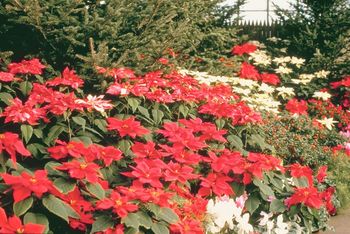How to Grow Plants
Learning how to grow plants is a hobby for many people, as well as a money-saving hobby. The idea of having your own garden and growing fruits and vegetables is fulfilling, because you nurture plants to put food on the dinner table, but gardening is also economical, because it’s cheaper to grow your own food.
One of the biggest problems with growing plants, though, is learning what each plant needs to grow properly. If you don’t know what you’re doing, you’ll end up killing the plant. People who have a hard time growing plants and gardening – the so-called brown thumbs – tend to forget some key step in the process.
Follow the steps below and you’ll have a firm base to become adept at growing plants, hopefully becoming a green thumb who knows how to grow plants with the best of them.
Learning to Grow Plants
When learning how to grow plants, remember that no matter where the plant is from, it requires basic needs like any other living thing. The most basic needs for a plant are water and sunlight.
A common mistake of beginning gardeners is not giving their plants enough sun or water. Some plant species require less of one or the other, while other species of plant require much more. Being a green thumb is knowing the difference in how to grow different plants, instead of giving all the plants in your garden the same treatment.
This is an extreme case, but to illustrate the point, plants such as cacti need less water than most plants, but they love to be in the sunlight; otherwise, they turn yellow. You can’t treat a cactus the way you would treat a zucchini.
Planting Seeds
When planting flowers, vegetables or fruits, it’s important you find out the proper conditions for the plants. If you plant a flower that needs a lot of sunlight, it’s a big mistake to put that plant in an area where there is little to no sunlight, for example. Not only will the plant not grow properly, but it might even die.

How to Grow Plants
Examples of flowers that need a lot of sunlight are asters, poppies and hollyhocks. On the other end of the spectrum are the flowers that thrive on a great deal of shade, such as lady’s mantle, crested iris and violet. Put any of these plants in the wrong environment and they won’t prosper.
Also take into account when planting is seed depth. Certain plants require being buried in deep holes, while others need only be placed on the soil to grow properly. Regardless of how deep the seed needs to be, it’s important that they get water.
Without water, the seeds won’t sprout and start growing. Before planting the seeds, it’s a good idea to find out how deep they need to be and what type of soil they need. Some plants need dry soil, such as cacti, while other plants need a great deal of water, such as lilies.
Caring for Plants
Many seeds need significant time to start sprouting, but that doesn’t mean that you should ignore them completely. The seeds need to be watered on a daily basis and the best time to water plants is in the early morning or late afternoon evening. If you water the seeds during the hottest part of the day, the water evaporates before it has a chance to get to the seed.
Once a plant starts growing, it’s even more important that you water it at the proper time. Otherwise, you run the risk of burning the plant. Watering the plants during the hot afternoon sun and heat causes the water and the moisture from the plant to be evaporated before the plant gets full use of that life-sustaining water, leaving a dry brown crispy plant.
If you want the plants in your garden to grow properly, till the soil every day, so weeds don’t grow. Tilling helps keep moisture in and weeds out. It’s also necessary to keep your garden free of weeds, by pulling them.
If you allow weeds to grow, they begin to choke the roots of your plants and cause them to die. Use herbicides and pesticides with caution, because if you spray your plants or flowers, you’ll out-and-out kill them.
Growing and taking care of plants can be time-consuming and frustrating, especially if you don’t have the time or good habits to manage them. Take time to evaluate how much effort you’re willing to put into managing your garden. If you want to grow a great deal of plants, ensure that you have ample time to care for them.
As a rough estimate, 5 square yards of planting area takes about 4 hours to maintain per week. If you wish to maintain a great deal of planting space, caring for plants can quickly become a full time job. But anyone who follows the proper steps for how to grow plants, then spends the time required, can become a green thumb.
